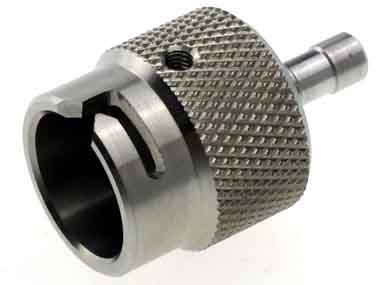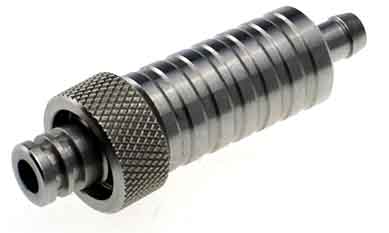CNC machining of mechanical and electrical equipment parts

Reliable and effective detection of surface textures of mechanically processed electromechanical parts is very necessary. The quality of these parts has a very important influence on the operation of the machine. Overcoming the surface texture defects of parts can greatly improve the automation level of production and processing. This article discusses the defect detection of the surface texture of machined parts, in order to further ensure the quality of the parts, and then provide strong support for industrial production.
Steps to detect texture defects of machined parts
2.1 A typical system for detecting and classifying texture defects
Including the following 5 subsystems interconnected; Image acquisition system, texture defect detection system, feature extraction subsystem, feature analysis subsystem, classification subsystem. A leather product surface texture defect detection system. The working process of the system is actually a process of searching for a defect target on a texture image, and this search process causes a long detection time. A method for detecting surface texture defects of machined parts based on statistical analysis; Based on the texture defect detection method of spatial point template matching, the method of combining autocorrelation function and spectrum analysis is used to try to identify the three-dimensional texture defect. The new computationally simpler texture defect detection method is to perform Fourier transform on the image first, and design a filter to remove the directionality of the texture. A new image is obtained through the inverse Fourier transform, and then the new image is thresholded to obtain the binary image of the defective target. Finally, the image morphology operation method is used to remove the texture segmentation noise and interference.

3. Understand the machined surface texture defect detection system
Fluorescence light source system, microscope and CCD camera are used to collect surface texture images of machined parts to the computer. Then the frequency spectrum image is calculated by Fast Fourier Transform FFT, and the frequency domain filter is used to enhance the defect texture image and suppress the background texture. Then it is restored into a spatial domain image through inverse fast Fourier transform IFFT, and finally the image segmentation method and image morphology operation are used to realize the separation of defect texture and background texture.
4. Analysis of surface texture characteristics of machined parts
During the machining process, such as the surface of the parts processed by milling, grinding, and planing processes, various textures will be formed on the surface of the machined parts due to the influence of the tool stroke.
Some are typical textures with strong directionality, and most of them are striped. The Fourier transform is performed on the surface image of such a machined part to perform a spectrum analysis, and the corresponding spectrum amplitude map obtained is another texture. It can be seen from this texture that the energy of the image is mainly distributed in the vertical direction of the main direction of the texture, so the spectral amplitude of the pixels in these areas is relatively large. Since the Fourier transform is a linear transformation, the information of the spatial image can be maintained in the frequency domain completely losslessly, and the texture attributes of the directional texture are mainly reflected in some directions perpendicular to the texture direction in the spectrogram. If the frequency domain filter is used to suppress and filter the energy in the energy-concentrated area of the spectrum, the texture feature of this directional texture will be greatly weakened, so that the defect texture can be enhanced to facilitate identification and classification.

5. Defect texture extraction method of CNC machined parts
For the filtered image, the background texture image is suppressed, while the defect texture image is effectively enhanced, and then a simple threshold segmentation method can be used to distinguish between the defect texture and the background texture. After threshold segmentation, there are not only defective targets, but also noise points. Therefore, further processing is needed to eliminate the influence of noise. Considering that the noise is random, there are randomly distributed isolated points on the image, and the texture defect has a certain shape. Practice has proved that opening an image can not only eliminate these isolated points, but also eliminate errors caused by image segmentation. Because the opening operation is a process of first corrosion and then expansion, it has the effect of eliminating small noises and smoothing the boundaries of larger objects.





